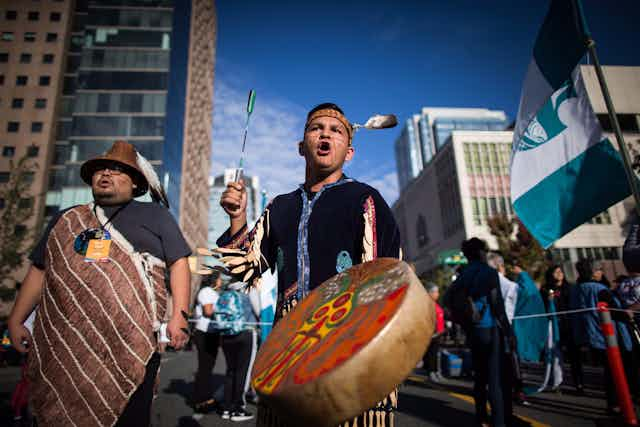It’s been almost three years since the release of the final report of the Truth and Reconciliation Commission (TRC) on the systematic abuse and intergenerational trauma wrought by Indian Residential Schools in Canada. That program was a colonial project that took Indigenous children out of their homes and placed them in residential schools with an aim to “kill the Indian in the child.”
The TRC was part of a class-action settlement against the Government of Canada and aimed to collect truths as part of a path towards reconciliation, but there remains a substantial amount of work to do.
At the federal level, the TRC report with its 94 Calls to Action was initially greeted with stunning silence. Although the 94 Calls to Action became more visible on the public stage in the months that followed, including being part of mandate letters sent to public officials, there is a silence that lingers.
For many, the mandate to take action was too broad. For others, the work of reconciliation was seen as neither their calling nor responsibility. The net effect, in many areas, has been a lack of action or a stall despite an urgent need otherwise.
This week, my research team at the University of Regina hopes to change this. Released in partnership with Canada FASD Research Network, the Framework For Action aims to help frontline workers, policymakers and researchers engage with the issues and create action plans for one of the TRC’s Call to Action related to the justice system - #34.
The TRC Call to Action #34 calls upon “the governments of Canada, the provinces, and territories to undertake reforms to the criminal justice system to better address the needs of offenders with fetal alcohol spectrum disorder (FASD).”
The justice system and FASD
There are 17 different calls to action that speak to the legacy of the residential schools in relation to the justice sector. Two of those calls focus on fetal alcohol spectrum disorder, a diagnostic term used to describe impacts on the brain and body of individuals exposed to alcohol during pregnancy.
While FASD can impact anyone exposed to alcohol during gestation, the fact that FASD is mentioned in two of the Calls to Action outlines the seriousness of the issue. This is a social justice issue for Indigenous and non-Indigenous communities alike. Indigenous families impacted by intergenerational trauma might be having children who have FASD. These children can find themselves embroiled in a system, a justice system that is often incarcerating versus accommodating or understanding of the nuanced issues facing Indigenous peoples.
FASD is a complex disability. Research indicates it can be overrepresented in both youth and adult populations in the criminal justice system. There is a need for more research to expand the use of evidence to influence policies and practices.
Recent reports from Statistics Canada noted that rates of incarceration of Indigenous peoples have been “trending upwards for over 10 years.” Indigenous peoples make up over 28 per cent of the overall male prison population and 43 per cent of the female prison population, even though they are less than five per cent of the general population.
Read more: Broken system: Why is a quarter of Canada's prison population Indigenous?
FASD is a lifelong disability. Like many disabilities, FASD is stigmatized and individuals can face marginalization. However, unlike many disabilities, FASD can follow a “racialized script” that is inaccurate but can serve to produce health and social welfare disparities.
While individuals with FASD experience challenges in their daily living, and may struggle with motor skills, physical health, learning, memory, attention, emotional regulation and social skills, individuals with FASD are unique and have both strengths and challenges.
Ongoing trauma
During the process of the TRC, commissioners collected testimony from over 6,000 witnesses across Canada over six years. The witnesses shared their experiences of physical, emotional and sexual abuse in the residential schools. They also shared their lived experiences of ongoing systemic oppression and trauma.
A group of individuals with a complex disability find themselves over-represented in the justice system. This is a serious social justice issue that demands attention.
The Framework for Action includes recommendations that could directly address the over-incarceration of Indigenous peoples.
Using an interdisciplinary and evidence-based approach that links research, policy and frontline practices, the framework offers a cluster of recommendations that aim to bring about real-world changes to improve the lives of individuals impacted by this disability.
While the Call to Action #34 is located in the justice sector, the issues related to FASD permeate across many sectors and therefore require more than justice reform. There are many ways to intervene against the alarming rates of individuals with FASD presenting in the justice system.
Ideas range from better community supports and case management to mandatory education about the disability and its contributing factors.
The TRC final report notes “reconciliation is not an Aboriginal problem; it is a Canadian one. Virtually all aspects of Canadian society may need to be reconsidered.”
The Framework for Action on #34 recognizes that change comes about through small and large steps. We offer 12 concrete ideas on how to take some of these collective steps in the right direction.

